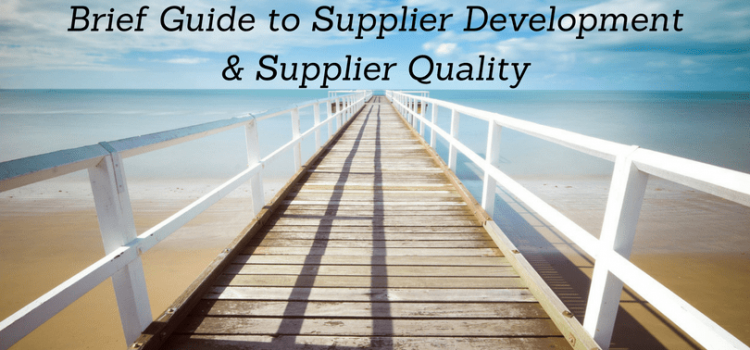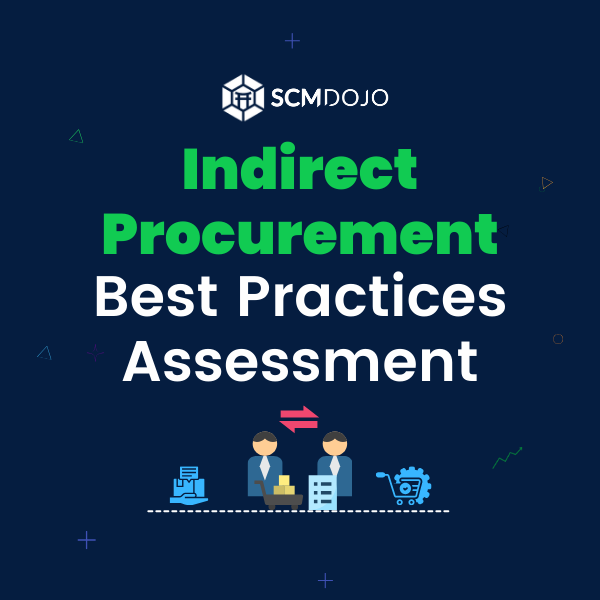Why Focus of Supplier Quality & Supplier Development?
Supplier Quality is responsible to track and improve our approved suppliers’ performance in terms of number of complaints, caused line stop/ escapes, DPPM (Defect parts per million). We value our suppliers and in the meantime challenge them to take responsibility and ownership in our effort to continuously improve our services and product quality. Each business level should define its weakest supplier pool (Focus 5) where shared efforts with impacted suppliers must be carried out in order to gain acceptable quality level as defined in your company Quality Objectives. The reason of the Focus 5 listing can be serious Quality Escape, bad DPPM, negative complaint rate trend or weak On-time delivery performance in the last 12 month.
Supplier Development is a proactive & reactive business process that aims to increase the performance
and/or capabilities of the supplier and meet companies’ short- and/or long-term supply needs. You can read the detailed technical definition here. Moreover, Supplier Development promotes ongoing improvements that are intended to benefit both your company and supplier(s).It is important to note that the above focus does not take into account short-term efforts to improve cost, quality or delivery issues with supplier(s) to meet companies’ expectations. Supplier Development focuses on long terms systematic improvement to attain sustained performance. The process of supplier development can be both direct and indirect. It is important to know the difference to manage your resources.
What Value You Will Get?
Supplier Development contributes towards 5 Key Work Streams in Supply Base:
1) Drive the Development of High Risk Supplier Products and Processes Using Commodity Specialists and an
Effective APQP Management Process.
2) Implement Continuous Improvement Projects (Lean, Process Capability, Six Sigma) with Key Strategic Suppliers to Drive Cost-Out and Supply Base Capability.
3) Reduce Supply Base Risk by the Effective Application of Focused Systemic Improvements and Risk Factor Analysis.
4) Improve Materials Management Competency in Supply Base.
5) Ongoing Assessment of Key Supplier Site Metrics to Ensure Business Continuity with Companies’ Requirement and Proactively Identify Potential Risk Factors
Effective Supplier Quality activities strengthen supplier performance via controlled supplier qualification and selection, part validation, incoming inspection and claim management.
How to Track Performance?
Every business have their own set of metric which they want to focus on. Here are few examples which I used:
Focus Supplier improvement results (DPPM and/or OTD (On Time Delivery) with min. 50% improvement) min. 10% YoY
improvement on Supplier DPPM
100% chargeback for Quality Escapes caused by External suppliers
100% adherence to the Supplier Self Assessment & Supplier Qualification process
Closure rate/time for Defective Material Report
Lead Time Reduction in Supply Chain
How to Manage Performance?
- Monthly Supplier Quality meetings are scheduled with each SCM Leader and their direct reports.
- Establish Supplier Development Projects deck for each business with clear business case and deliverables to achieve stretch development goals.
- Conduct Quarterly Business Reviews with key/strategic partners
- Conduct scheduled process audits to focus supplier processes
- Have structured Supplier Self Assessment process which should be done by both buyer and supplier to compare few on supplier rating criteria.
Key Questions You Should Ask as Supply Chain Leader
Process:
– What are the Top 10 Regional Strategic or Potential Supplier where we need to launch Supplier Development Projects to drive continuous improvement or drive competitive advantage. – How do we follow Production Part Approval Process (PPAP)? Do suppliers comply with our PPAP requests?
– Do we launch and maintain Supplier Development Projects for “Focus 5” Suppliers for each site?
– Have our suppliers been qualified via former Quality System Assessment or Supplier Self-Assessment process?
– How do we deal with supplier risk assessments including geopolitical, natural disaster, & business continuity planning?
At the plant level:
– Who are the top 3 troubled suppliers and what actions are being taken to address their performance?
– Describe the Defective Materials Report (DMR) process, show examples of written DMRs and what is the process for reviewing the corrective actions?
People:
– Is our SCM people aware of Quality Manual or Guidelines available in business?
– Do we communicate Supplier Excellence Manual constantly towards suppliers?
– Do our site level people know the escalation path in case of significant Supplier Quality issues?
– What specific actions are included on each Supplier Quality/Development Engineer’s development plan and what competency is that plan addressing?
Resources:
– Do we have qualified people to do supplier system and process audits?
– Have our Supplier Development and Supplier Quality Engineering completed essential training of supplier quality tools like Advance Production Quality Planning (APQP)?
About the Author- Dr Muddassir Ahmed
Dr MuddassirAhmed is the Founder & CEO of SCMDOJO. He is a global speaker, vlogger and supply chain industry expert with 17 years of experience in the Manufacturing Industry in the UK, Europe, the Middle East and South East Asia in various Supply Chain leadership roles. Dr. Muddassir has received a PhD in Management Science from Lancaster University Management School. Muddassir is a Six Sigma black belt and founded the leading supply chain platform SCMDOJO to enable supply chain professionals and teams to thrive by providing best-in-class knowledge content, tools and access to experts.
You can follow him on LinkedIn, Facebook, Twitter or Instagram






